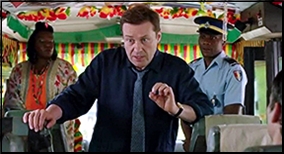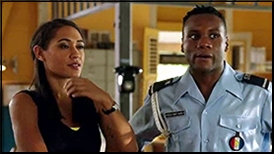Tue 14 Jan 2020
A Movie Review by Jonathan Lewis: A NIGHT IN CASABLANCA (1946).
Posted by Steve under Films: Comedy/Musicals , Reviews[6] Comments
A NIGHT IN CASABLANCA. United Artists, 1946. Groucho Marx, Harpo Marx, Chico Marx, Charles Drake, Lois Collier, Sig Ruman. Director: Archie Mayo.
One of the later entries in the Marx Brothers film catalogue and a movie supposed made in order to help Chico Marx pay off his gambling debts, A Night in Casablanca was originally imagined to be a satire of Warner Brothers’ Casablanca (1942), the now classic film starring Humphrey Bogart. Aside from the setting and a Nazi connection, there isn’t all that much that binds these two films together. And to be perfectly honest, this Marx Brothers entry is nowhere near as appreciated as the comedians’ earlier films from the 1930s.
Yet, it remains a worth a look for a few reasons. First of all, there are definitely some good verbal quips from Groucho, and Harpo shines as a mute who must convey his thoughts via music and mime. [See comment #3.] And at the end of the day, even a lesser Marx Brothers film with its zany antics and physical comedy is often better than a lot of the comedies that are produced and released into theaters today.
For me personally, what made A Night in Casablanca worth watching was the fact that an escaped Nazi was the film’s antagonist. It was only one year since the Second World War had ended, and Hollywood had already discovered the allure of stories involving Nazis on the run and the notion of hidden Nazi loot and treasure.
Unlike two other movies from the same year that featured Nazis running from their past – Alfred Hitchcock’s Notorious (reviewed here) and Orson Welles’s The Stranger (reviewed here) – the Marx Brothers film plays the topic for laughs. Heinrich Stubel (Sig Ruman), the villain here, is more of a stereotypical and buffoonish Teutonic figure than either evil incarnate or an amoral opportunist. But the fact that he is supposed to be someone to root against is transparent.
Here also is something I noticed and I thought I would mention. Groucho’s character, a hotel manager who helps bring Stubel to justice, is named Ronald Kornblow. Ignore the misspelling and you will notice it’s a very stereotypical German-Jewish name. I have to wonder if this was not deliberate, given the Marx Brothers’ own German-Jewish and Alsatian-Jewish origins.


